By Catherine Poslusny
Worldwide, more than 5 billion pounds of conventional pesticides are used each year. But the targeted pests aren’t the only ones impacted. Pesticide residue can often be found in the air, soil, surface water, and groundwater in countries around the globe. These toxic chemicals wreak havoc on ecosystems by harming non-target organisms, including plants, insects, small animals, fish, birds, and even beneficial soil microorganisms.
How do toxic pesticides harm us all?
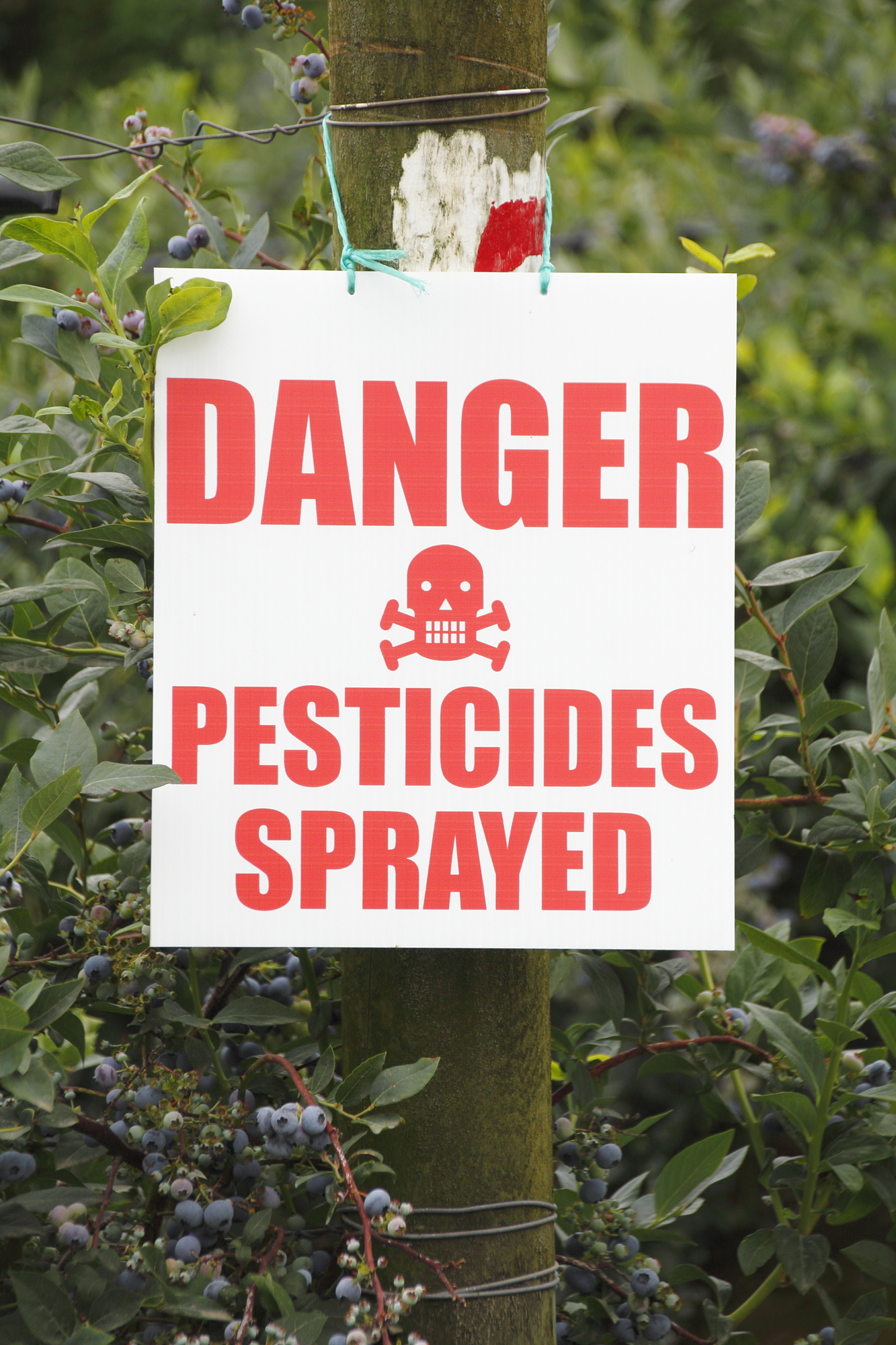
Bees, birds, small mammals, fish, and other organisms can come into contact with pesticides in a few ways:
- Direct contact with the pesticide by inhabiting an area that’s been treated.
- Eating plants, insects, or other prey that had direct contact with the chemicals.
- Drinking or swimming in contaminated groundwater or surface water.
Sometimes, pesticide exposure is fatal to non-targeted organisms. Other times, it may have non-lethal effects that disrupt the natural order. For example, exposure to pesticides can impair a bird’s energy for foraging or singing, making it harder for the bird to attract a mate and reproduce. Bees are also especially sensitive to pesticides, and even the slightest levels of toxic chemicals may impact a bee’s ability to gather food and navigate her way home.
Pesticides and Human Health
In addition to the harm they cause to the environment, pesticides are also dangerous for human health. Short-term exposure during pesticide application may cause skin inflammation or rash, coughing, sneezing, difficulty breathing, headaches, nausea, and eye, nose, and throat irritation. Chronic pesticide exposure is associated with more severe health problems, including congenital disabilities, cancer, endocrine disruption, blood and nerve disorders, and reproductive issues.

The Best Option: Integrated Pest Management
Thankfully, poisonous chemicals aren’t the only way to keep pests away. Integrated pest management (IPM) is a natural pest control strategy for keeping your home free from pests without relying on pesticides. And, as a bonus, it’s typically cheaper and more sustainable than solving your pest problem with chemicals alone.
IPM focuses on preventing pest infestations before they start (or, at the very least, stopping them before they get out of hand). Your first task? Figure out how the pests are getting into your home. Seal any cracks or gaps that are big enough for insects or mice to slip through. (Caulk is your best friend here.) Mice and other rodents can chew through most things, so you’ll need cement, steel wool, or another type of metal to fill any gaps over a quarter-inch wide. If you have an outdoor garden, use chicken wire, insect screens, or other barriers to keep pests from getting to your plants.
Next, you want to minimize the things attracting pests to your area. This means regular cleaning, focusing on the kitchen, bathrooms, and any areas where you see insect or rodent activity. Your goal is to make it impossible for a pest to find food, water, or a place to hide. Look for rotting wood, food crumbs, standing water, stacks of old magazines, cardboard boxes, or other areas where pests could start to settle without you noticing.
Once you’ve done your part to prevent infestations, the next steps in IPM are using natural pest control measures: deterrents, beneficial insects and animals, and (as a last resort) non-toxic exterminators.
Do-It-Yourself Organic, Nontoxic, and Natural Pest Control
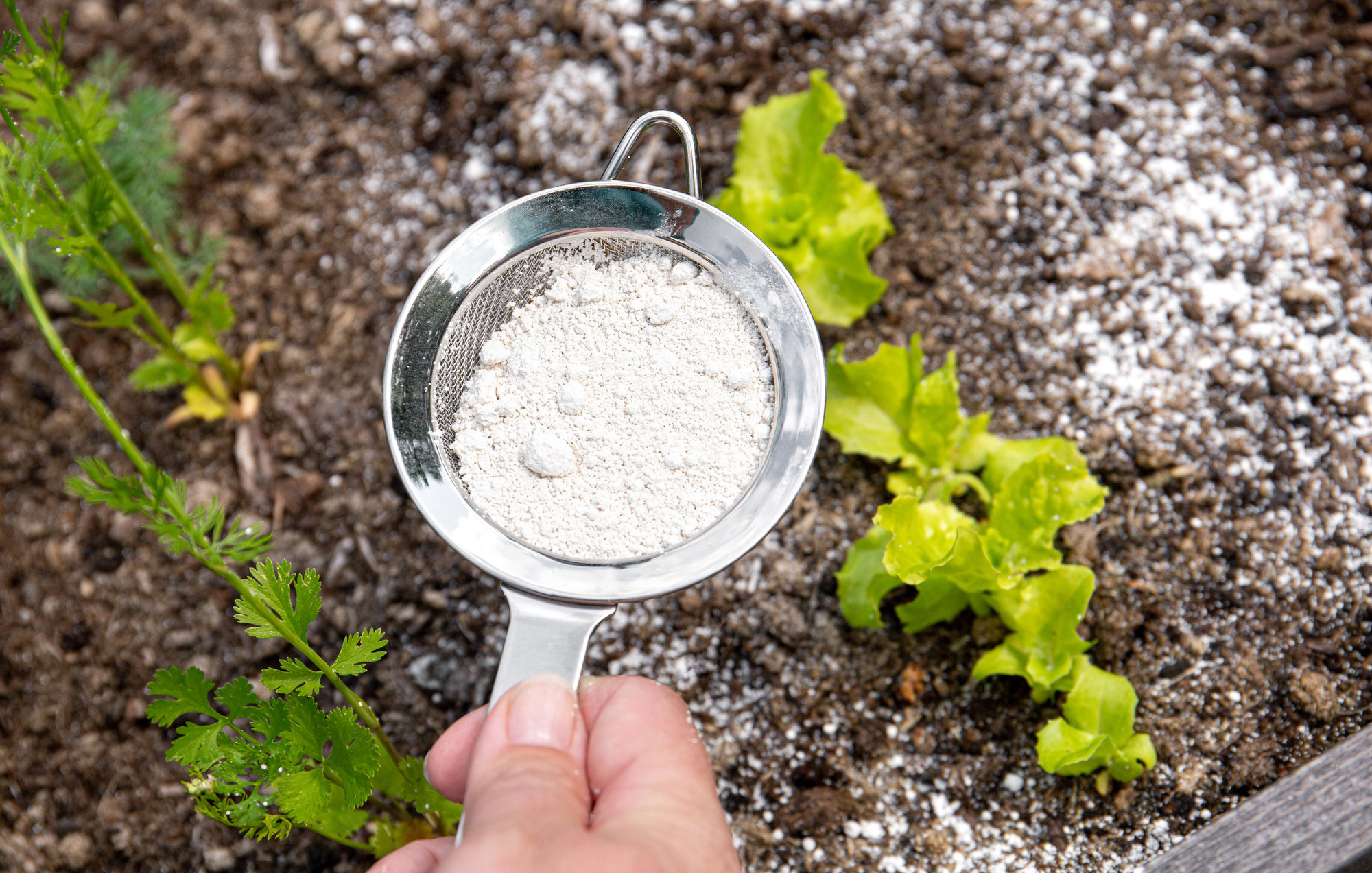
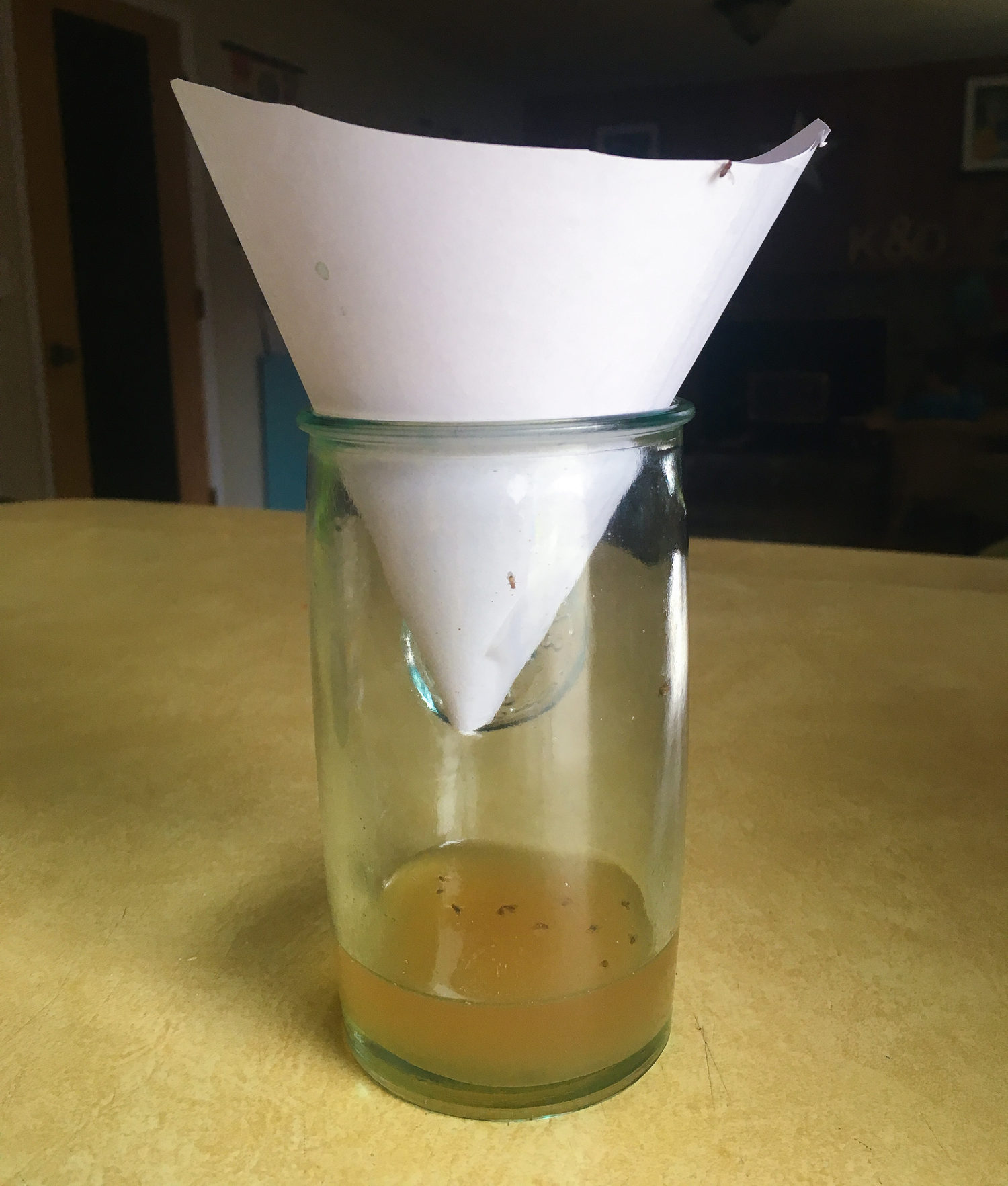
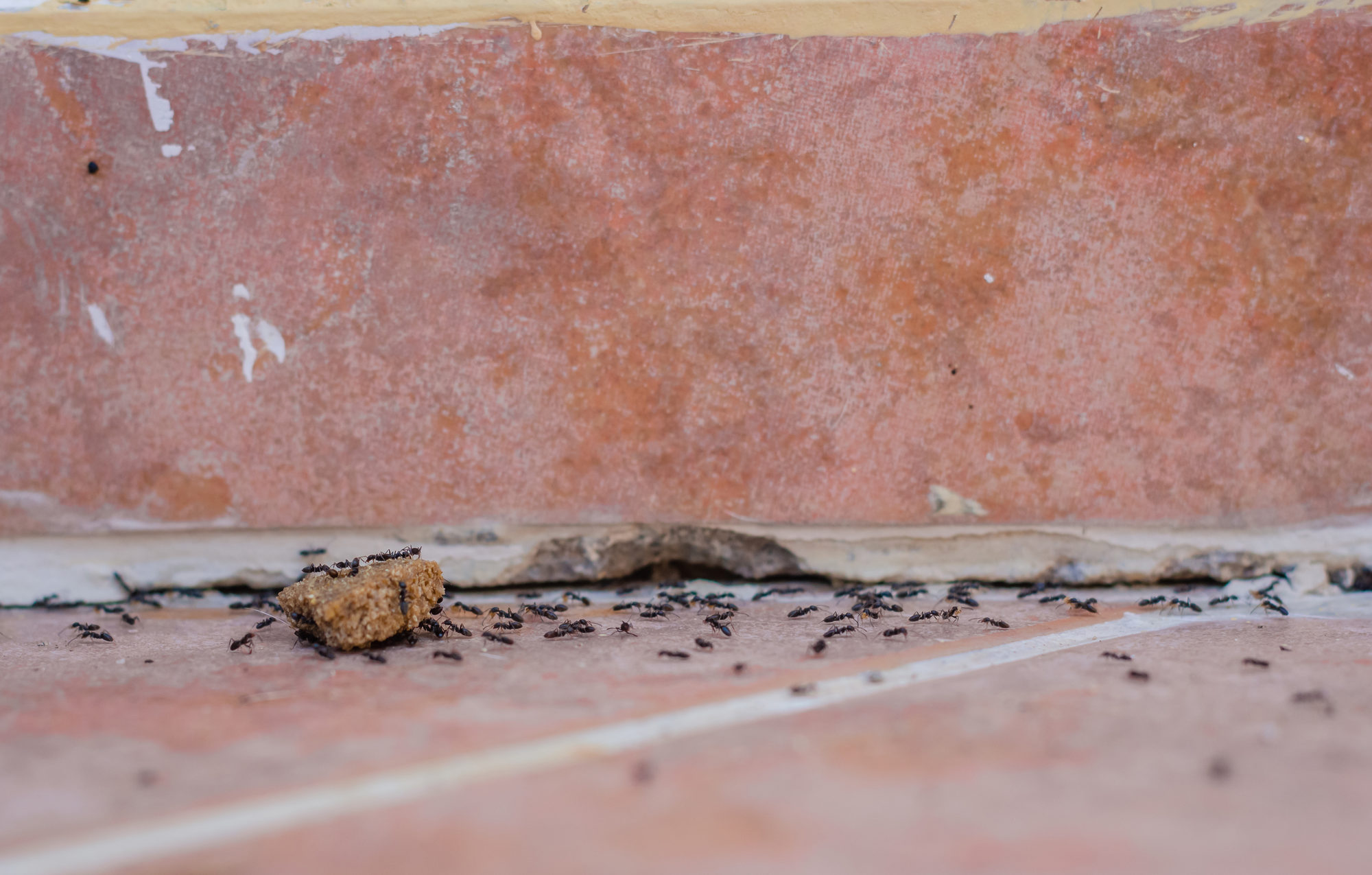
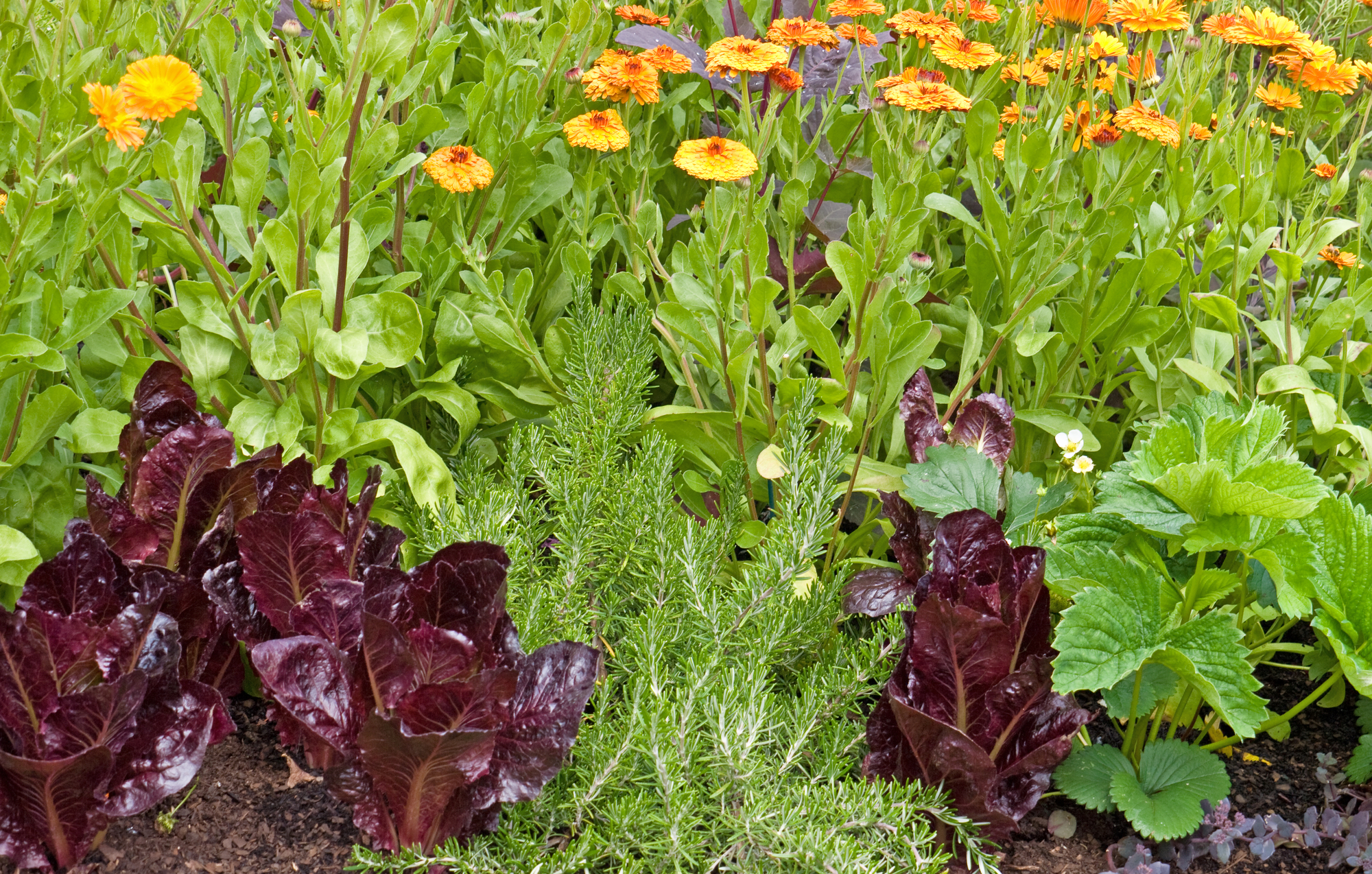
- Use a flyswatter or flypaper to kill flies.
- Sweep up and dispose of individual insects and their nests.
- Knock down wasp nests. Wasps don’t like to have colonies overlapping territory, so set up decoy wasp nests to discourage new nests.
- Set traps with nontoxic bee-safe bait.
- Install non-chemical termite barriers, like TERM from Polyguard.
When you need additional help, try the following DIY natural pest control solutions:
- Use natural soap to wash away known ant trails. Soap sprays can also be used as a contact insecticide for many soft-bodied insects and mites.
- Diatomaceous earth kills insects by dehydrating their bodies. Sprinkle food-grade diatomaceous earth along cracks or gaps where bugs may enter your home. Just be sure not to breath it into your lungs.
- To discourage pests from eating your plants, create a spray from neem oil, a plant extract known for combating fungal diseases and more than 200 insect pests. Other essential oils, such as peppermint and rosemary, may also kill or repel many types of insects.
- To attract and kill fruit flies, fill the bottom of a jar with apple cider vinegar and top with a slitted cover or a paper cone with narrow opening.
- Plant marigolds, mint, chrysanthemums, lavender, or other plants that repel insects.
- Make a homemade pest repellent using hot peppers, garlic, mint, rosemary, or onions. Simply chop up your ingredients (feel free to use more than one) and put them in water. Let sit overnight, strain the water into a spray bottle, and apply to the affected areas. Reapply at least once a week while the problem persists, more if it rains.
Note: Many natural pest control methods aren’t harmful to humans or animals, but they pose just as big a threat to beneficial insects as to pests. Keep that in mind when choosing how and where you treat an outdoor pest problem.
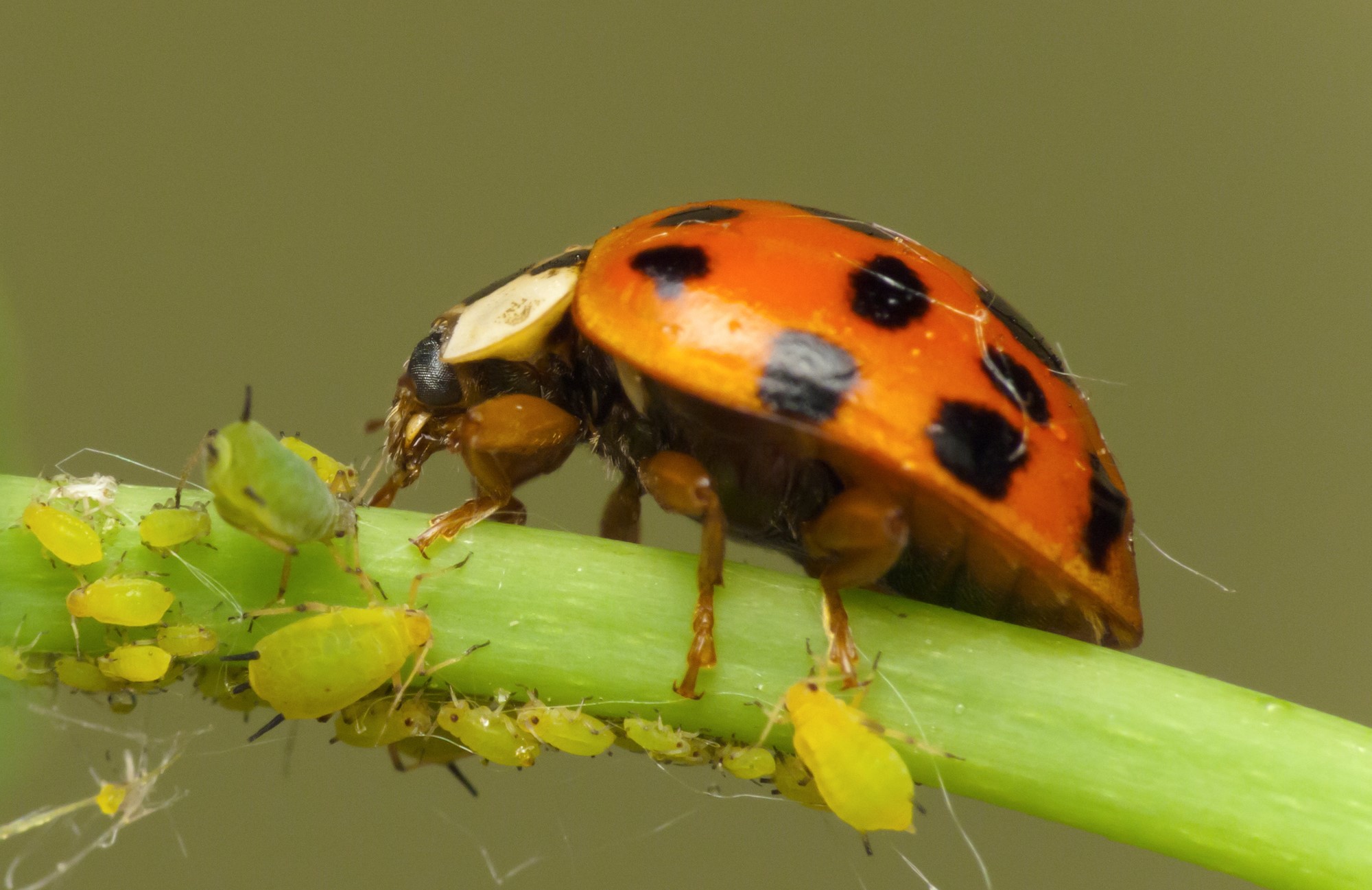
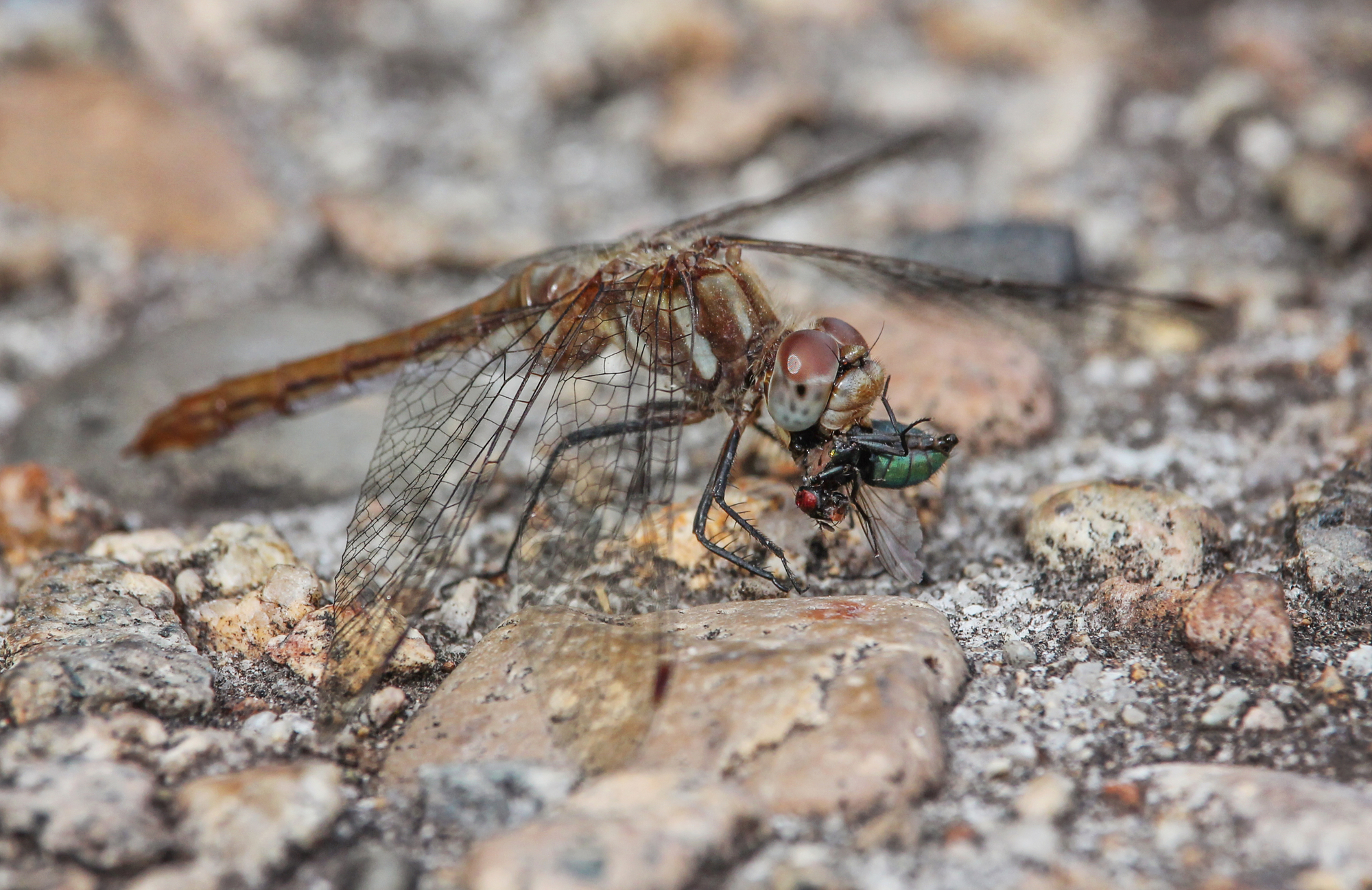
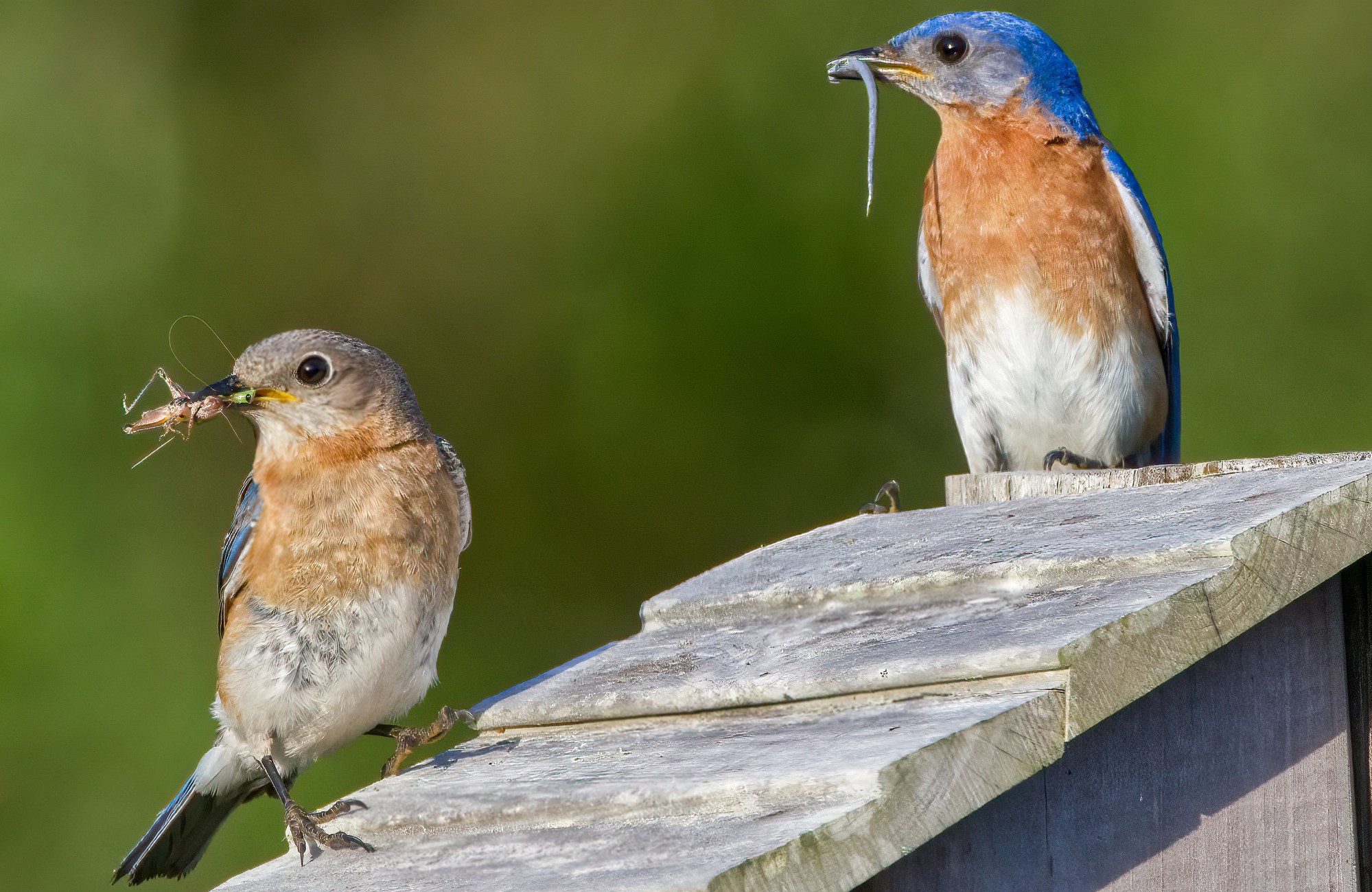
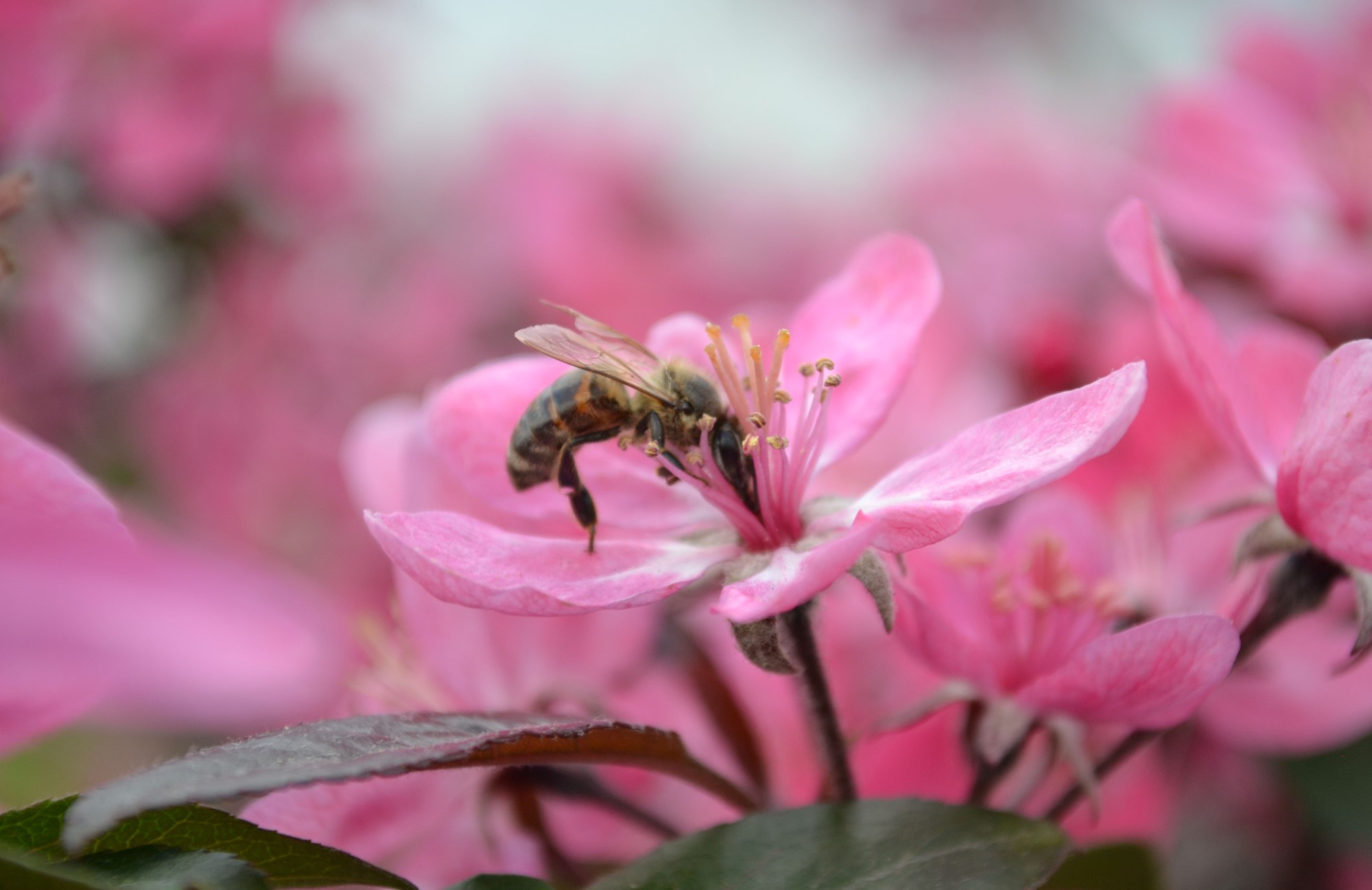
Beneficial Insects and Animals
Outdoors, nature can often give you a hand and do some of your pest control work for you. All it takes is a little effort to attract the right wildlife. For example, making your backyard more dragonfly-friendly can help control the local mosquito population.
Ladybugs, dragonflies, bats, frogs, lizards, and owls can all help control your outdoor pest population. However, you shouldn’t run off to the pet store to dump new animals in your backyard. Instead, research the lifecycle of specific pests and look up ways to attract their natural predators. This can include:
- Planting native flowers, shrubs, or trees.
- Increasing the variety of plant life in your yard.
- Leaf litter can be a predatory beetle’s best friend; but you may have to take further measures to balance the slug population
- Installing a sustainable water feature. Even something as simple as a birdbath may attract natural consumers to your yard.
- Placing flat rocks in your garden. They’re the perfect place for a frog, lizard, or dragonfly to catch some sun.
The best thing you can do to attract natural consumers? Make sure they have food to eat. Using pesticides to eradicate the insects in your yard means repelling (and potentially harming or killing) beneficial insects and animals too. If you have sprayed pesticides in the past, it may take a season to build up your population of natural pest controllers to balance the populations. The harmony and health of your outdoor spaces will be well worth the wait. Migrating birds, butterflies, or a summertime firefly display could be your reward.
Note: Natural consumers aren’t the only type of beneficial insect. Bees and other pollinators are a crucial part of maintaining any ecosystem. If bees are becoming a nuisance, a beekeeper can help you move the hive without harming the bees.
Nontoxic Exterminators
If an infestation gets out of hand, an extermination service may be required to keep pests from harming any humans or animals living in your home. Fortunately, that doesn’t have to mean bombarding your living space with neurotoxins. Some pest control services specialize in sustainable, eco-friendly pest removal and strategies for ongoing natural pest control. When choosing whom to hire, look for a service that:
- Is licensed in your state.
- Has a certification from Green Shield, GreenPro, EcoWise, or another reputable organization that sets standards for reducing the human and environmental harm of pest control methods.
- Specializes in integrated pest management.
- Can supply a list of references.
- Is upfront about their findings and pest control recommendations.
- Provides a written estimate and guarantee of their services.
- Proposes a sustainable, chemical-free, long-term strategy to keep pests away.
The Bottom Line
You shouldn’t have to share your home with unwanted guests, but don’t make the environment pay the price for your peace of mind. Integrated pest management, including organic and natural pest control measures, gives you the best of both worlds—pest-free living without exposing your home and wildlife up and down the food chain to the harmful chemicals found in most pesticides. Win!






![10 Steps Toward a Zero Energy Home [Infographic]](https://elemental.green/wp-content/uploads/2016/04/cbfb-440x264.jpg)

